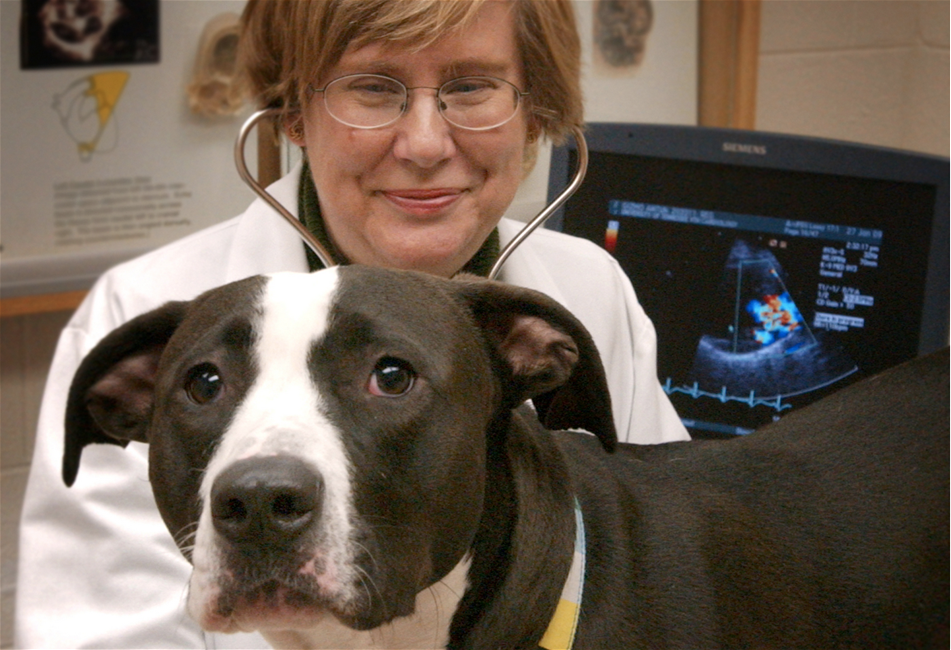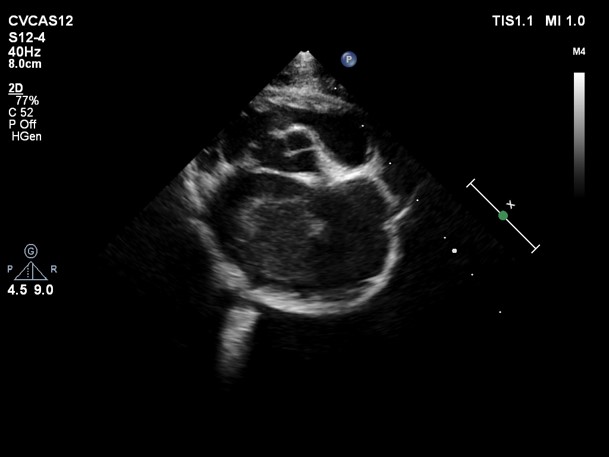

Search Help
Enter a country to search internationally or a city/state or zip to search within the US. If you select a country it will search only within that country. If you select only a state it will only search within that state. If you search for a zip code or city/state combo it will search within a proximityWhat is a Board-Certified Veterinary Cardiologist?
A Veterinary Cardiologist is a specialist that has advanced training in the heart and circulatory system.
To become a Board-certified Veterinary Cardiologist, a veterinarian usually completes a one year internship followed by extensive specialized training in an approved residency training program (usually 3-5 years). Most Veterinary Cardiologists work with small animals; however, some specialize in large animals, including horses and cattle.
What conditions do Veterinary Cardiologists treat?
Board-certified Veterinary Cardiologists focus on diagnosing and treating diseases of the heart and some lung conditions, which include:
- Congestive heart failure (CHF)
- Heart muscle disease (Dilated cardiomyopathy or hypertrophic cardiomyopathy)
- Age related changes to the valves of the heart (Degenerative mitral valve disease)
- Coughing and other breathing problems
- Congenital (present at birth) heart defects
- Cardiac arrhythmias (problems with the rate and/or rhythm of your animal’s heart)
- Diseases of the pericardium (sac surrounding the heart)
- Cardiac tumors
- High blood pressure (hypertension)
- Pulmonary hypertension (high blood pressure in the lungs)
Veterinary Cardiology Specialists will perform a complete and thorough physical examination on your animal, and based on these initial findings, additional tests will be discussed. They will also review your animal’s past history and current medications. Depending on your animal’s condition, diagnostic testing or treatments may include:
- Echocardiography (sonogram) – non-invasive ultrasound imaging of the heart
- Electrocardiography (ECG) – non-invasive electrical reading of the heart’s rhythm
- Blood pressure evaluation
- Holter monitor – 24 hour ECG performed at home
- Radiography (x-rays) of the chest and lungs
- Surgical repair of congenital heart defects
- Cardiac catheterization procedures
- Balloon valvuloplasty to dilate narrowed valves
- Pacemaker implantation for animals with too slow of a heart rate
- OFA Heart Registry Certification for breeding programs
How do Veterinary Cardiologists work with your primary care vet?
Board-certified Veterinary Cardiologists are an integral part of your animal’s health care team from the time a potential cardiac abnormality is noted. Early diagnosis and appropriate therapy of cardiac conditions helps your animal live a longer and healthier life. They work closely with your primary care veterinarian to ensure your animal’s optimal health. While some cardiac conditions require hospitalization, most conditions can be managed on an outpatient basis by a Board-certified veterinary cardiologist along with your primary care veterinarian.
Many Veterinary Cardiology Specialists practice in veterinary teaching hospitals or large referral clinics and are contributing to clinical research programs that aim to improve the cardiac health of animals. Veterinary Cardiology research is essential to identify new diagnostic tests and treatments for cardiac conditions in animals and even humans.
Veterinary education is also important to the Veterinary Cardiologist. From training veterinary students to providing continuing education courses to veterinarians and to training future board certified cardiologists, cardiology specialists are often involved in improving veterinary knowledge and understanding of the cardiac and circulatory conditions.
...
Find a Board-certified veterinary cardiologist using our search tool!
Edited by:
Rebecca Saunders, DVM, DACVIM (Cardiology)
April, 2020
Feline Arterial Thromboembolism (FATE) in Cats
What is Feline Arterial Thromboembolism (FATE)?
Feline Arterial Thromboembolism, or FATE, is one of the most serious consequences of cardiac disease in cats. When a cat has advanced cardiomyopathy (heart disease), the left atrium in their heart can become enlarged, which results in decreased blood flow in that area.
Blood clots, also known as emboli, can then form and break loose, entering the body’s circulatory system and causing blockage of blood flow to the cat’s limbs, other organs, or brain. Most commonly, the blood clot will exit the heart, travel
down the aorta (the body’s main artery), and lodge in the iliac arteries (the body’s main blood supply to the hind end), resulting in complete blockage of blood flow to the cat’s rear legs.
Although uncommon, these blood clot events can occur secondary to non-cardiac related causes, too, including cancer and protein loss.
 What are the symptoms of FATE?
What are the symptoms of FATE?
When a clot lodges in the iliac arteries, cats will develop a sudden onset of weakness and an inability to use their rear legs. This sudden paralysis is often accompanied by pain, vocalization (crying), and difficulty breathing.
Image (Echocardiogram showing large clot in left atrium of heart).
If your cat is displaying these signs, you should seek urgent veterinary care. FATE is a medical emergency, as blood clots can potentially travel to any part of the body. Clinical signs can vary, including front limb lameness, inappropriate mentation
(unsteady walk, balance issues, disorientation, etc.), or even sudden death.
How can FATE be prevented?
If your cat has an enlarged left atrium, your Veterinary Cardiologist may prescribe
medications to help prevent the occurrence of an inappropriate blood clot (most commonly clopidogrel (Plavix) and/or aspirin). Choice of medication is dependent on your cat’s individual risk factors and will be determined by the Board-certified
Cardiologist.
There are likely certain genetic factors that affect your cat’s risk for forming blood clots. Some risks for clot occurrences are sadly unpreventable and may be beyond current medical therapies.
What is the prognosis for cats with FATE?
If a blood clot enters the cat’s circulation, the overall prognosis for the patient is sadly poor. With aggressive medical therapy and supportive care to control pain, maintain body temperature, treat heart failure if present, and promote increased
circulation, data suggests that 15-50% of cats can survive an initial clot event.
The road to recovery in cats with FATE can be long and it is difficult to predict how quickly or completely an individual cat will regain function of the affected limb(s). If pain or heart failure cannot be adequately controlled, very sadly, euthanasia
may be the best choice for your beloved cat.
Some cats that survive the initial episode will never have an additional event; however, most cats will have another clot event within 6-12 months despite aggressive anti-clot therapy.
